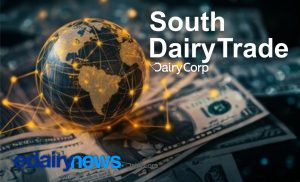
And some people think dairy farmers may be able to tap into this new market if they can find a way to make it pay.
In a survey published in the Journal of Dairy Science, researchers conducted both a survey and an experiment to determine what consumers might pay for RAU-labeled milk. Using an experimental auction, known as a Becker-Degroot-Marschak auction, consumers used real money and real milk to make purchase choices. Although nearly half of survey respondents indicated that they would buy RAU-labeled milk, consumers who participated in the experimental auction refused to pay a premium for RAU milk.
Researchers in the study wrote, “Concerns about antibiotic-resistant infections in the United States have called for a reduction of antibiotic use in livestock, including dairy cattle. Although effective in curbing antibiotic use, universal organic dairy farming would be impractical and unattainable due to its high land and premium demands.”

Driven by a concern for antibiotic-resistant infections in the United States and a call for reduced antibiotic use in livestock, RAU-labeled milk supposedly would minimize antibiotic use on dairies while still allowing dairy farmers to treat sick cattle. This proposal over antibiotic use in agriculture would contrast with the U.S. Department of Agriculture’s Organic Certification label, which will not allow products to be marketed as organic from an animal that has ever been treated with antibiotics.
While some consumers will pay a premium for organic milk, the study references evidence that stringent organic requirements may unintentionally cause reluctance among organic farmers to treat diseases with antibiotics.
Similar programs are already on the market
The poultry industry has been using a relatively new USDA label, Certified Responsible Antibiotic Use, or CRAU, that differentiates therapeutic and non-therapeutic use of medically important antibiotics. Producers certified as CRAU may only use medically important antibiotics in meat and poultry production for therapeutic use prescribed by a licensed veterinarian. Certified by the USDA, CRAU now covers chickens, turkey, beef, and pork.
Antibiotics use is on the decline
Since 2015, there has been a 38 percent reduction in the sales of medically important antibiotics for use in livestock. The U.S. Food and Drug Administration released this statement in a news release in 2020 saying, “This suggests that continued efforts to support the judicious use of antimicrobials in food-producing animals are having an impact.”
The FDA banned the use of medically important antibiotics for growth promotion in food animals in 2017. Just last year, the FDA published Guidance for Industry No. 263 in the federal register. The document outlined a strategy and timeline for bringing all medically important antibiotics that are available over the counter under veterinary oversight by 2023.
A new Annual Summary Report on Antimicrobials Sold or Distributed for Use in Food-Producing Animals should be released by the FDA next month.

























